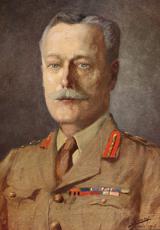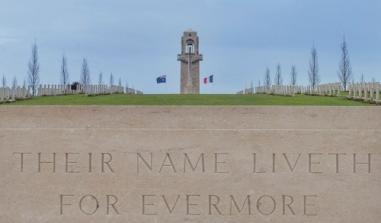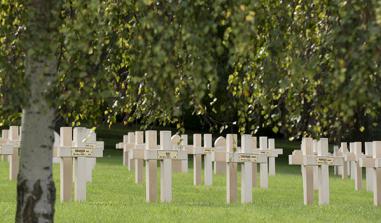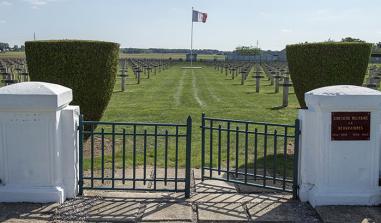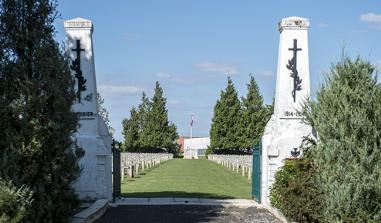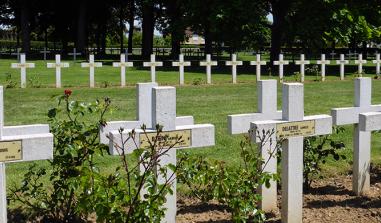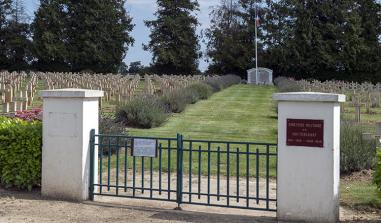Lihons National Cemetery
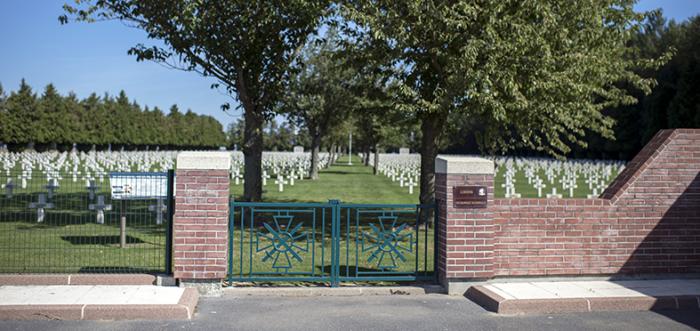
La nécropole nationale de Lihons. © ECPAD
Pour accéder au panneau d'information de la nécropole, cliquer ici 
Lihons National Cemetery was founded in 1915 by the French military authorities. It is home to 6,587 French soldiers who died in WWI. Of these, 1,671 lie in ossuaries alongside the remains of six Britons and two Armenians. The cemetery was redeveloped in 1919 and then in 1935-1936. It also holds bodies that were exhumed from other temporary cemeteries in the surrounding area, such as Belloy-en-Santerre and Framerville cemeteries.
The American poet Alan Seeger died during this assault. After growing up in Mexico, the former Harvard student moved to Paris where mobilisation took him by surprise. Sensitive and romantic, he enlisted alongside fifty other American volunteers in the Foreign Legion. On 4 July 1916, the day of the US national holiday, the poet died after singing popular French songs throughout the night. Today, in all likelihood, his remains lie in the ossuary with many other volunteers who joined the Foreign Legion. The young writer’s grave was destroyed by subsequent bombings. He is the author of the poem “I have a rendezvous with death”, which he wrote on 1 July 1916. His body could not be identified with certainty. In 2006, a monument commemorating the writer and soldier was erected. It is a symbol of the military engagement of young people and Americans.
There is an imposing monument where Prince Louis Murat lies on the northeast edge of the village of Lihons. He was the great-great-nephew of Napoleon I and grandson of the Empire Marshall Joachim Murat. This young man of 19, a volunteer, was killed by the enemy on 21 August 1916. The imperial eagle atop the monument is now kept in Lihons town hall.
Furthermore, the Somme’s largest German cemetery, containing the bodies of 22,665 German soldiers, is located in Vermandovillers, and includes the grave of four pilots from Baron Manfred von Richthofen’s squadron.
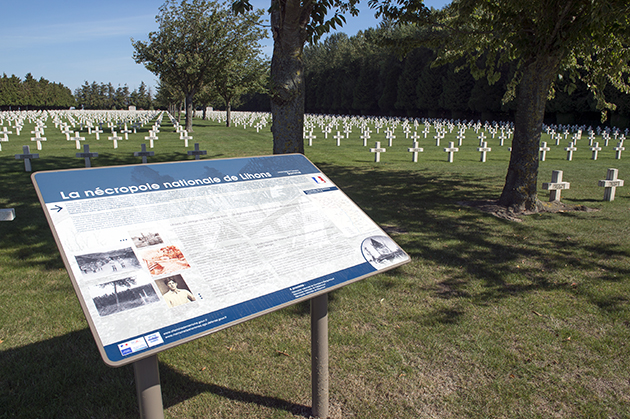
La nécropole nationale de Lihons. © ECPAD
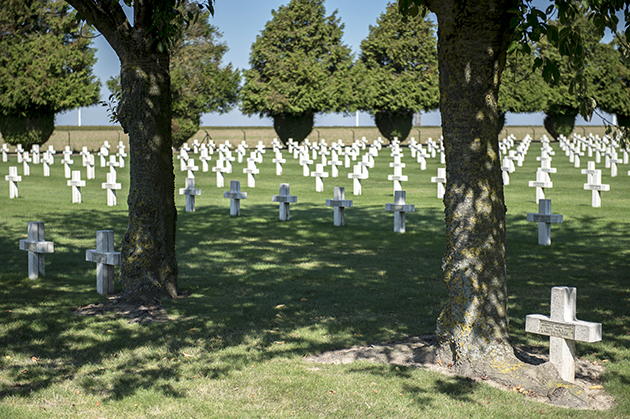
La nécropole nationale de Lihons. © ECPAD
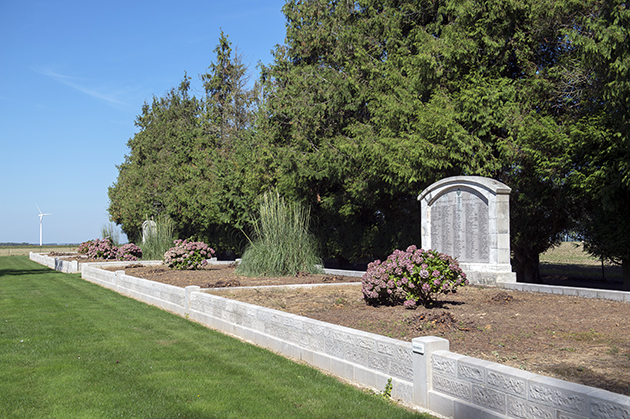
La nécropole nationale de Lihons. © ECPAD
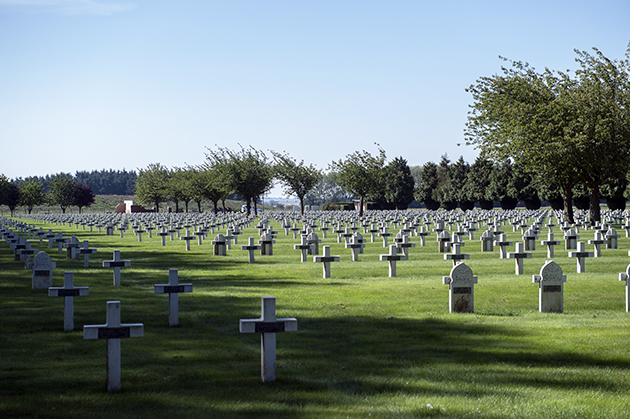
La nécropole nationale de Lihons. © ECPAD
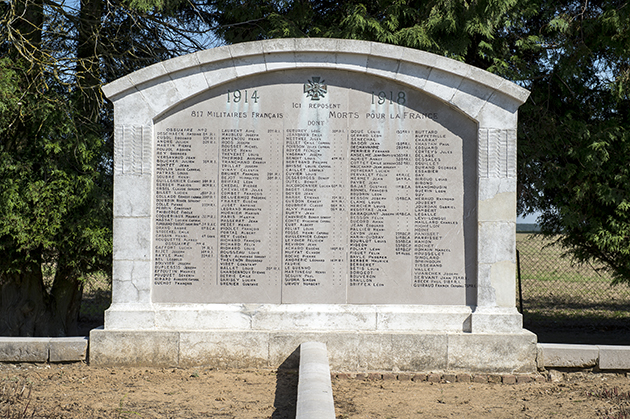
La nécropole nationale de Lihons. © ECPAD
La nécropole nationale de Lihons. © Guillaume Pichard
La nécropole nationale de Lihons. © Guillaume Pichard
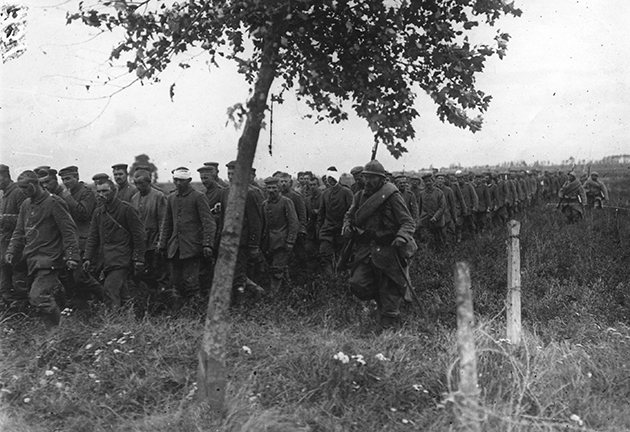
Convoi de prisonniers allemands à Lihons. © Ministère de la culture, Médiathèque de l'architecture et du patrimoine, diffusion RMN
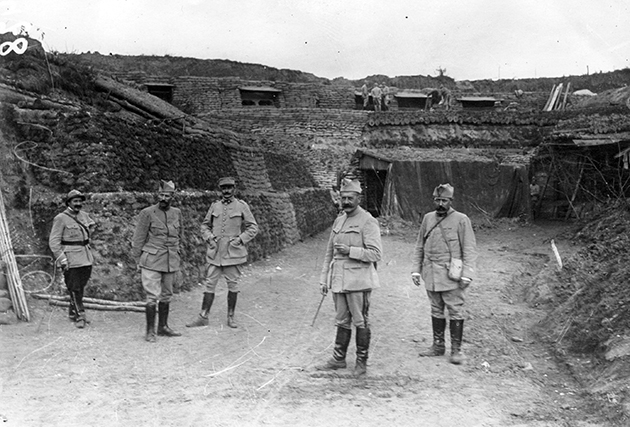
Quartier général du général Boulangé, commandant la 51e division au premier plan, à la Tour-Carrée (carrières entre Vauvillers et Lihons), 12 septembre 1916. © Ministère de la culture, Médiathèque de l'architecture et du patrimoine, diffusion RMN
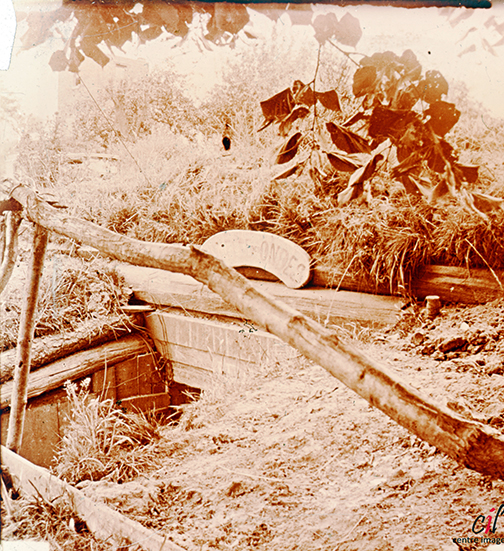
Entrée d'une galerie de tranchée (Lihons). © CIL/Collection Jacques André
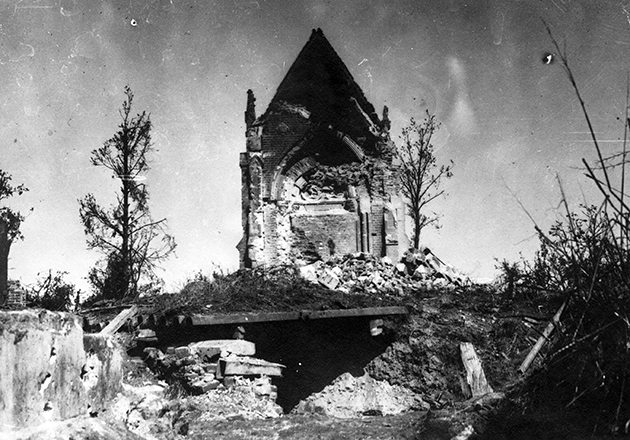
Etat de la chapelle de Lihons après l'attaque, septembre 1916. © Ministère de la culture, Médiathèque de l'architecture et du patrimoine, diffusion RMN
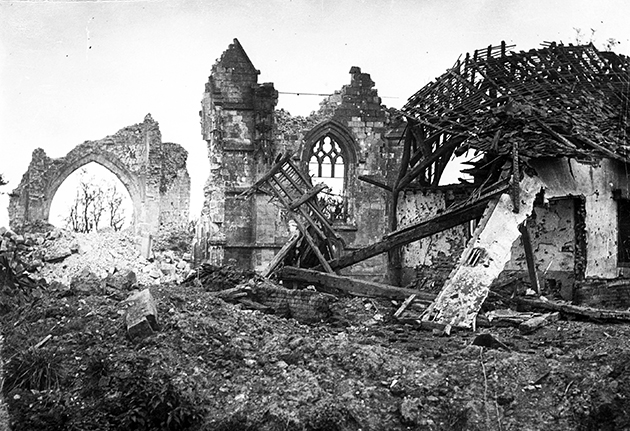
Ruines de l’église de Maucourt, septembre 1916. © Ministère de la culture, Médiathèque de l'architecture et du patrimoine, diffusion RMN
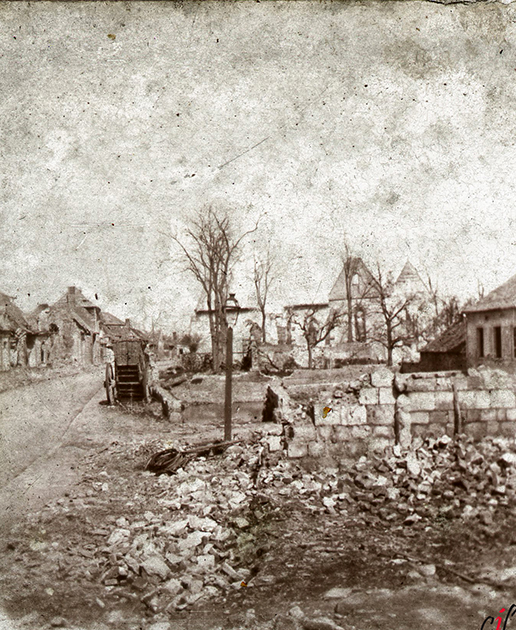
Lihons en ruines (Somme). © CIL/Collection Jacques André
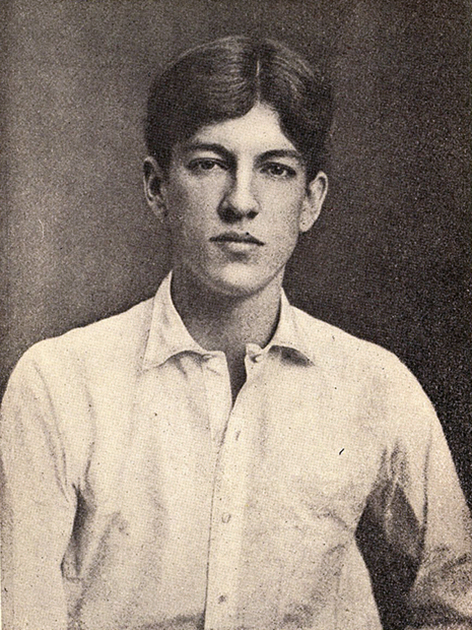
Portrait photographique du poète américain Alan Seeger. "Jeune légionnaire, enthousiaste et énergique, aimant passionnément la France. Engagé volontaire au début des hostilités, a fait preuve au cours de la campagne d'un entrain et d'un courage admirables. Glorieusement tombé le 4 juillet 1916", Citation à l'ordre du jour de la Division du Maroc, 25 décembre 1916. © Collection privée - FBN - DR
Practical information
Lihons
Au nord de Roye, D 337
Visites libres toute l’année
Summary
Eléments remarquables
Read more
Read more
Comité départemental du tourisme de la Somme
21, rue Ernest Cauvin
80000 Amiens
Tél. 03 22 71 22 71


